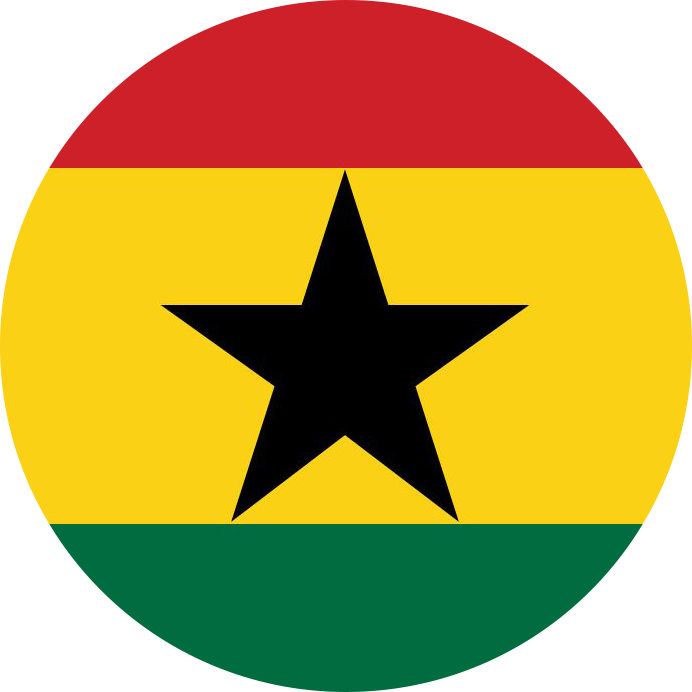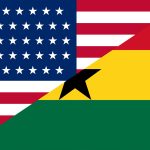Ghana’s population is over 35 million, with roughly half living in urban areas. The capital Accra is the largest city, followed by Kumasi. Below are the top cities (2025 estimates) with their economies, cultural sites, and appeal to visitors or investors. Each entry lists the 2025 population estimate, main industries, highlights, and relevance for travelers/expats/investors.
Accra (Pop. ~2,788,000)
- Economy: Ghana’s political and economic hub. Accra hosts the central bank, Ghana Stock Exchange and dozens of banks and insurance companies. It is a center for manufacturing, marketing, finance, insurance and transportation. The city also has light industry (textiles, chemicals) and a growing services sector.
- Highlights: Key landmarks include Independence (Black Star) Square, the Kwame Nkrumah Mausoleum, Christiansborg (Osu) Castle, the National Museum and Theatre, and the Jamestown Light. Art and markets abound (e.g. Makola Market). The coastal suburb Labadi Beach and lively nightlife in Osu are draws for visitors.
- Travel/Invest: As the capital, Accra has Ghana’s main international airport (Kotoka) and most hotels and expat services. It has the most foreign investment (finance, ICT, NGOs) and expatriate community. However, it is also the busiest and most expensive city in Ghana.
Kumasi (Pop. ~4,036,000)
- Economy: The historic “Ashanti capital” and Ghana’s second city is a major commercial and industrial center. Kumasi is home to West Africa’s largest market (Kejetia Market) and a hub for the timber, crafts and retail trade. Half of Ghana’s timber processing occurs here. Smaller industries (food processing, shoemaking, printing) also thrive.
- Culture/Highlights: Kumasi is the heart of Asante culture. It features the royal Manhyia Palace (museum of Ashanti kings), the Prempeh II Jubilee Museum (with the Golden Stool), Kumasi Fort (an old colonial fort turned museum), and the Centre for National Culture. Kente cloth weaving and traditional crafts are nearby. The city is nicknamed “The Garden City” for its parks and tropical greenery.
- Travel/Invest: Kumasi’s international airport (KIA) connects northern Ghana and neighboring countries. It hosts Kwame Nkrumah University of Science and Technology (KNUST) and a strong local economy. Many visitors use Kumasi as a base for Ashanti cultural tourism and trips to nearby attractions (e.g. Bonwire kente village, Lake Bosomtwe).
Sekondi–Takoradi (Pop. Metro ~1,160,000)
- Overview: The twin cities of Sekondi and Takoradi (Western Region capital) form an industrial/port metropolis. (The core populations are lower, but the metro area is about 1.16 million.) Sekondi–Takoradi is Ghana’s chief oil‑and‑shipping center.
- Economy: It hosts Ghana’s deepwater Port of Takoradi and related industries. Key activities are timber and plywood, cocoa processing, shipbuilding, and fishery. Recently offshore oil (oilfields like Jubilee) and natural gas projects have boosted growth. Takoradi’s new oil refinery and related infrastructure make it a magnet for energy investors.
- Highlights: The area has Atlantic beaches (Busua, Princes Town) and colonial forts (Fort Orange in Sekondi). The city itself is more an industrial hub than a tourist spot, but it serves as a gateway to beaches and the nearby Kakum and Ankasa National Parks.
- Travel/Invest: Sekondi–Takoradi is key for port/shipping businesses. Takoradi Airport offers regional flights. It has mining service companies and entry points for the Western Region’s goldfields and offshore oil platforms.
Tamale (Pop. ~360,600)
- Economy: The capital of the Northern Region and Ghana’s third-largest city. Tamale’s economy is largely agrarian and commercial. Agriculture (yields of maize, rice, cotton and vegetables) is the biggest sector, followed by trade and services. The city markets produce for northern Ghana and neighbor countries. There is also a growing public and educational sector (Tamale Technical University, etc.).
- Culture/Highlights: Tamale is known for its rich Dagbon culture. It features colorful mosques (e.g. the central Tamale mosque) and is close to the historic 15th‑century Larabanga Mosque – the oldest mosque in Ghana. The Dagbon Palace (chief’s palace) and local markets showcase northern crafts like leatherwork. Nearby attractions include Mole National Park (tours from Tamale) and the Larabanga Stone Mosque (circa 1421).
- Travel/Invest: Tamale Airport links the north to Accra. Its cooler dry climate and lower cost of living attract some domestic migration. It’s a forward base for NGOs and small manufacturers supplying the north. As a rapidly growing city, it offers emerging opportunities in retail and construction.
Tema (Pop. ~155,800)
- Economy: A planned city 30 km east of Accra, Tema is Ghana’s main industrial port city. Tema’s harbor is the country’s largest, handling most imports. The city is heavily industrialized – home to Coca-Cola bottling, cement and steel plants, oil refinery (modeled on its deepwater port) and the Oil/Gas Processing Company. In short, Tema’s economy revolves around shipping logistics and heavy industry. The city is often described as Ghana’s industrial heartland.
- Highlights: Tema itself has few tourist sites, but there are coastal attractions: Sakumono Beach is a local recreational spot, and tours of Tema Harbour are offered. The newly developed “Beach Resort” areas draw Accra residents.
- Travel/Invest: Tema’s real estate is popular with families and expats seeking more space than Accra. Its port and freezone make it attractive for foreign investors and manufacturers. Tema is connected by highway and rail to the north and has many Inland Container Depots (ICDs), making it a logistics hub.
Cape Coast (Pop. ~212,400)
- Economy: A historic city on the Central Region coast. Today its economy is dominated by tourism and education. The University of Cape Coast and Cape Coast Technical University bring students to the city. Commercial fishing and cocoa trade are also important.
- Highlights: Cape Coast’s top attraction is the 17th‑century Cape Coast Castle (a UNESCO Slave Route Site). Other highlights include Kakum National Park (with a famous canopy walkway) and the annual PANAFEST cultural festival. Colonial-era architecture and the Cape Coast beaches (e.g. Assin Manso, Elmina nearby) also draw visitors.
- Travel/Invest: As a tourism center, Cape Coast has several hotels and seafood restaurants. Many day-trippers from Accra or Kumasi visit for its castles and national park. The city’s education institutions also create a modest expat/academic community.
Obuasi (Pop. ~179,600)
- Economy: A mining town in Ashanti Region, Obuasi’s economy revolves around gold. It is the site of the Obuasi Gold Mine – one of the world’s largest underground gold mines. Mining (AngloGold Ashanti) is the dominant industry. In addition, local trades include timber processing, craft industries, and small-scale agriculture. The mine’s redevelopment (post-2018) is expected to continue driving growth.
- Highlights: The town itself is built around mining, but visitors can tour the AngloGold Ashanti mining complex (subject to permission). Nearby is the Ashanti mountains region. Obuasi also hosts sporting events (annual fun runs, stadium).
- Travel/Invest: Obuasi has a regional airport and a rail link to Kumasi. Investors in mining and equipment services are active here. The town attracts workers from across Ghana, especially for mining jobs.
Koforidua (Pop. ~151,300)
- Economy: Capital of the Eastern Region, Koforidua is a regional commercial center. Its industries are mostly light manufacturing: Ghana’s oldest intravenous infusion (pharmaceutical) plant is here, along with small factories for textiles, pottery and crafts. Cocoa used to be a major crop, but the city is now more focused on trade, retail and administration.
- Highlights: Koforidua is known as “Kofcity” and mixes colonial and modern architecture. Nearby natural attractions are big draws: Boti Falls (scenic twin waterfalls) and the famous Umbrella Rock formation are just outside town. Local markets (Kotokuraba Central Market, Agartha) showcase regional crafts and food.
- Travel/Invest: Koforidua lies on the main highway between Accra and Kumasi. It has a lively market economy and growing real estate, attracting investors in retail and housing. The city is a convenient base for exploring the Eastern Region (e.g. Lake Volta and nearby hills).
Each of the above cities is a major urban hub with distinct roles: Accra leads as the political and financial center; Kumasi as the Ashanti cultural and trading hub; and others like Tema and Sekondi–Takoradi as industrial/port centers. Tourist-friendly spots like Cape Coast and Koforidua add cultural and natural diversity. For further details see Ghana Statistical Service and World Population Review data.
Sources: Population figures are from United Nations-based projections (World Population Review). Economic and cultural information is drawn from Ghanaian government and academic sources (Ghana Statistical Service, Ghana tourist sites, and city profiles) as noted above. Each city description cites reputable references for its data.



